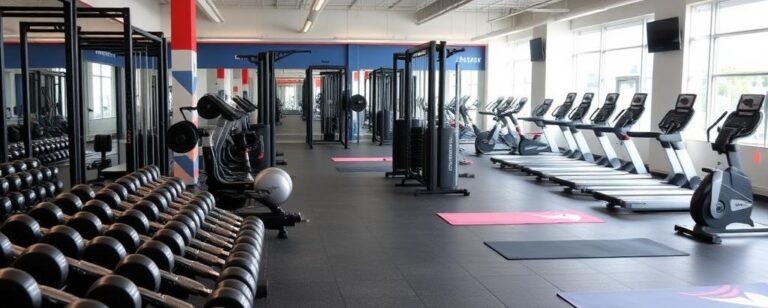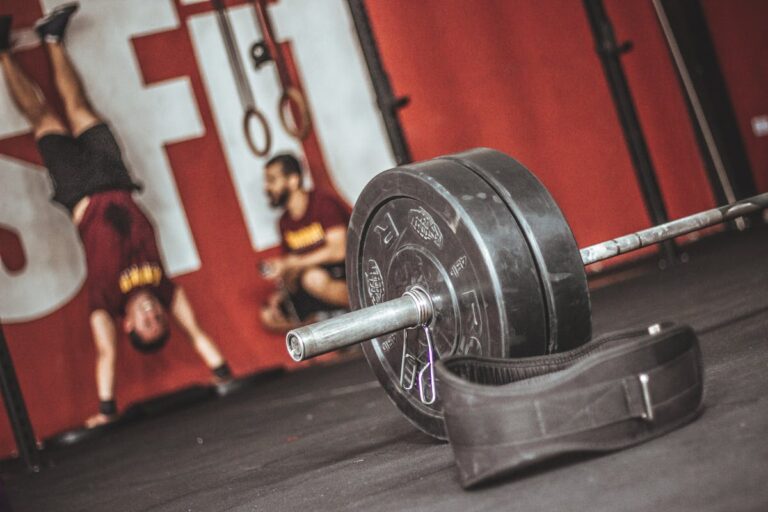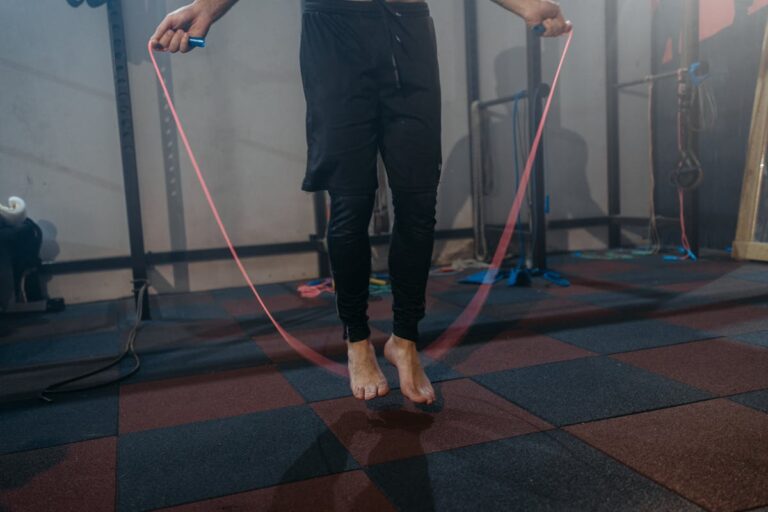The Ultimate 30-Day Calisthenics Workout Plan for Beginners
Discover the Ultimate 30-Day Calisthenics Workout Plan for Beginners! Start your full body calisthenics home workout now. Ideal for those new to calisthenics fitness.
Table of Contents
Benefits of Calisthenics Over Traditional Workouts
Calisthenics offers numerous advantages compared to traditional workout regimens. These differences can impact factors such as accessibility, functionality, and overall fitness development. Here are the key benefits:
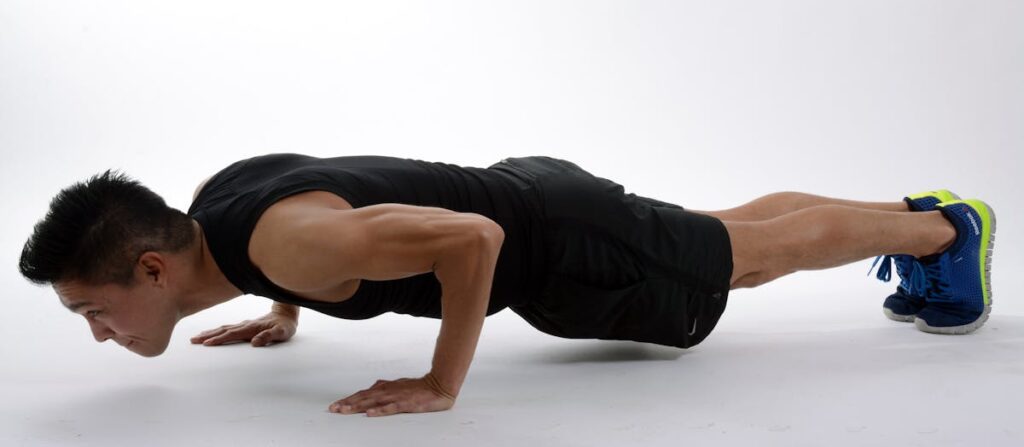
1. Minimal Equipment Required
- No need for heavy weights or gym machines.
- Access to basic equipment like pull-up bars or resistance bands suffices.
- Ideal for home workouts or outdoor exercises.
2. Cost-Effective
- Eliminates the necessity for expensive gym memberships.
- Reduces the financial burden associated with purchasing workout machinery.
- Utilizes body weight, making it inherently free.
3. Versatility and Flexibility
- Can be performed in almost any location, indoor or outdoor.
- Does not rely on specific environments or facilities.
- Allows seamless integration into varying routines and schedules.
4. Enhances Functional Strength
- Focuses on natural body movements.
- Improves strength useful for everyday tasks.
- Promotes better muscle coordination and joint stability.
5. Scalable for All Fitness Levels
- Easily modified to fit beginner, intermediate, and advanced levels.
- Progression is intuitive based on individual strength gains.
- Provides a non-intimidating entry point for those new to fitness.
6. Improves Body Awareness and Control
- Enhances proprioception and spatial awareness.
- Encourages the development of balance and coordination.
- Strengthens the mind-muscle connection critical for effective training.
7. Promotes Lean Muscle Growth
- Encourages muscle hypertrophy without the bulk.
- Focuses on endurance and stamina alongside strength.
- Ideal for those seeking a lean, toned physique.
8. Cardiovascular Health Benefits
- Often involves compound movements engaging multiple muscle groups.
- Can include high-intensity variations boosting heart rate and stamina.
- Supports overall cardiovascular health and efficiency.
9. Injury Prevention
- Minimizes risk associated with lifting heavy weights.
- Strengthens stabilizing muscles reducing injury occurrences.
- Encourages proper form and technique throughout movements.
10. Community and Social Engagement
- Fosters group workouts and outdoor fitness classes.
- Encourages social interaction and collective motivation.
- Builds a sense of community among participants.
By considering these advantages, one understands how calisthenics serves as a comprehensive and accessible alternative to traditional gym workouts, catering to diverse fitness goals and lifestyles.
Getting Started: Essential Equipment for Calisthenics
For beginners embarking on a calisthenics journey, equipping oneself with the right tools can significantly enhance the experience and effectiveness of workouts. Although calisthenics primarily relies on body weight, certain equipment can provide additional support and variety.
Basic Equipment
- Pull-Up Bar:
- Facilitates exercises like pull-ups, chin-ups, and hanging leg raises.
- Can be installed in doorways or mounted on walls.
- Parallel Bars:
- Essential for dips, L-sits, and leg raises.
- Portable versions are available for home use.
- Resistance Bands:
- Ideal for building strength and providing support during pull-ups and dips.
- Available in various resistance levels.
Supportive Gear
- Gymnastic Rings:
- Perfect for enhancing upper body strength with exercises like ring dips and muscle-ups.
- Can be hung from a pull-up bar or secure overhead point.
- Yoga Mat:
- Provides comfort and support for floor exercises such as push-ups and planks.
- Anti-slip materials ensure stability during workouts.
- Gloves or Grips:
- Protect hands during high-friction exercises like pull-ups and muscle-ups.
- Improve grip strength, thereby enhancing performance.
Advanced Equipment
- Weighted Vest:
- Adds extra resistance to body-weight exercises for increased intensity.
- Ideal for advanced practitioners looking to boost strength and endurance.
- Parallettes:
- Allows for various push-up and planche variations.
- Compact and portable, suitable for home gyms.
Additional Accessories
- Foam Roller:
- Aids in muscle recovery and alleviates soreness post-workout.
- Can be used for pre-workout muscle activation.
- Jump Rope:
- Excellent for cardiovascular conditioning and warming up.
- Portable and easy to use.
- Ankle Weights:
- Adds resistance for lower body exercises like leg lifts.
- Adjustable weights cater to different fitness levels.
Safety Considerations
- Proper Footwear:
- Ensures stability and support during dynamic movements.
- Reduces the risk of injury.
- Clear Workout Space:
- Minimizes accidents and allows full range of motion for exercises.
- Hydration:
- Maintain water intake to stay hydrated during sessions.
Investing in the above essential and supportive equipment will not only aid in mastering calisthenics movements but also provide the necessary foundation for a safe and effective workout routine.
The Importance of Warm-Up and Cool-Down Exercises
Warm-up and cool-down exercises play a critical role in any workout regimen, and the 30-day calisthenics workout plan for beginners is no exception. Engaging in these practices ensures physical readiness, reduces injury risk, and promotes optimal performance and recovery.
Benefits of Warm-Up
A proper warm-up prepares the body for the physical demands of exercise by gradually increasing heart rate and blood flow to muscles. This helps:
- Increase muscle temperature: Warmer muscles are more elastic and can contract more efficiently, reducing the risk of strains and tears.
- Enhance joint mobility: Dynamic stretches and movements lubricate joints, promoting greater range of motion.
- Improve mental focus: Engaging in a warm-up routine allows individuals to mentally prepare for the upcoming workout, enhancing concentration and performance.
- Boost circulation: A gradual increase in circulation delivers more oxygen to muscles, optimizing energy production and stamina.
Components of an Effective Warm-Up
An effective warm-up should last between 5 to 10 minutes and include:
- Cardiovascular exercises: Light jogging, jumping jacks, or brisk walking to raise heart rate.
- Dynamic stretches: Arm circles, leg swings, and walking lunges to engage multiple muscle groups and enhance flexibility.
- Calisthenics-specific movements: Moderate-intensity exercises like push-ups or squats mimicking the movements of the main workout.
Benefits of Cool-Down
The cool-down phase allows the body to transition back to a resting state, which has several benefits:
- Gradual reduction of heart rate: Slowly decreasing heart rate and blood pressure prevents dizziness and fainting.
- Muscle relaxation: Gentle stretching helps release muscle tension accumulated during the workout.
- Improved flexibility: Static stretches enhance flexibility and prevent stiffness.
- Enhanced recovery: Cooling down helps clear metabolic waste products from muscles, promoting quicker recovery and reducing soreness.
Components of an Effective Cool-Down
A comprehensive cool-down should last 5 to 10 minutes and incorporate:
- Light aerobic exercises: Walking or gentle cycling to gradually lower heart rate.
- Static stretches: Holding stretches for major muscle groups for at least 20-30 seconds, focusing particularly on muscles worked during the session.
- Deep breathing exercises: To promote relaxation and oxygenate muscles.
Understanding the importance of warm-up and cool-down exercises in the 30-day calisthenics workout plan ensures beginners are well-prepared for their fitness journey, minimizing injury risk and optimizing results.
Understanding Bodyweight Training Basics
Bodyweight training, also known as calisthenics, emphasizes using one’s own body weight to perform exercises. This form of training allows for increased flexibility, strength, and endurance without the need for any gym equipment. Understanding the fundamental aspects of bodyweight training can enhance the efficiency and effectiveness of a workout routine.
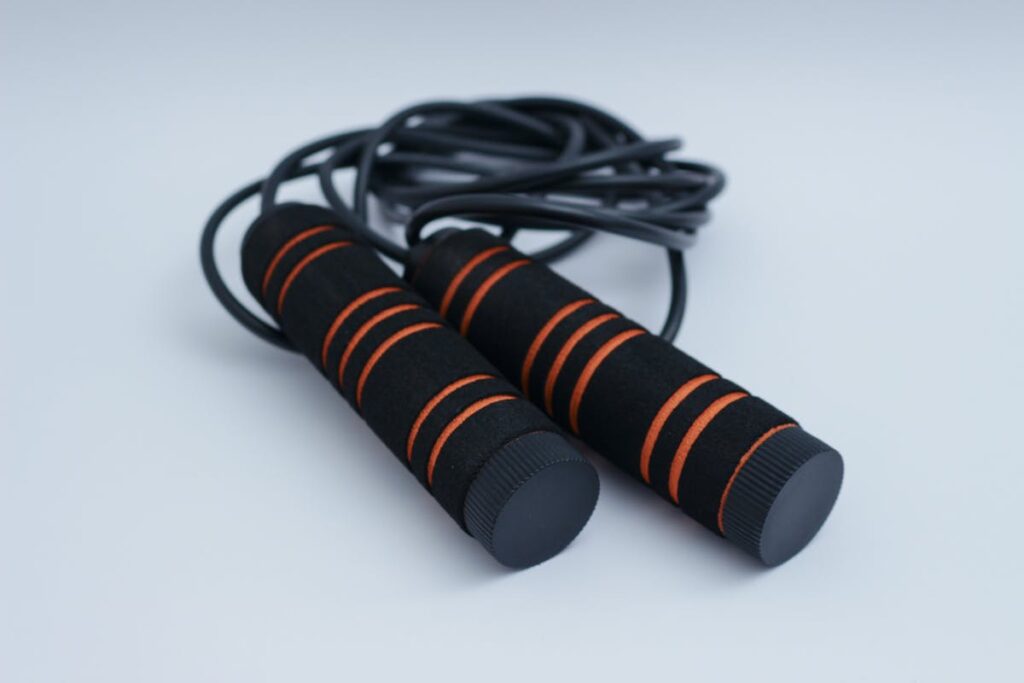
Key Concepts
- Progressive Overload:
- This principle involves gradually increasing the difficulty or intensity of exercises over time. It is essential for stimulating muscle growth and strength. Beginners can start with basic movements and progress to more advanced variations.
- Proper Form and Technique:
- Proper form reduces the risk of injury and ensures maximum engagement of target muscles. This includes maintaining correct posture, controlled movements, and consistent breathing patterns. Video tutorials and professional guidance can be invaluable.
- Rest and Recovery:
- Incorporating rest days into the workout plan aids in muscle recovery and growth. Typically, a rest day every two to three days is recommended for beginners to prevent overtraining.
Types of Exercises
- Push Exercises:
- Push-ups
- Dips
- Shoulder taps
- Pull Exercises:
- Pull-ups (assisted, if necessary)
- Bodyweight rows
- Chin-ups
- Core Exercises:
- Planks
- Bicycle crunches
- Leg raises
- Leg Exercises:
- Squats
- Lunges
- Calf raises
Benefits of Bodyweight Training
- Accessibility:
- No special equipment or gym membership is required. Exercises can be performed at home, in parks, or even in small spaces.
- Scalability:
- Exercises can be modified to match any fitness level. Beginners can start with simpler variations and advance as they become stronger and more skilled.
- Functional Fitness:
- Bodyweight exercises often mimic everyday movements, enhancing overall functional strength and mobility.
Important Tips
- Warm-up:
- A proper warm-up prepares muscles and joints for exercise. This can include dynamic stretches or light cardio activities.
- Listen to the Body:
- It is crucial to pay attention to any signs of discomfort or fatigue. Ensuring adequate rest and avoiding pushing beyond one’s limits can prevent injuries.
- Set Realistic Goals:
- Establishing achievable goals can keep motivation high and provide a clear path for progress. Documentation of progress helps in maintaining focus and commitment.
Understanding the basics of bodyweight training equips beginners with the knowledge needed to embark on an effective workout journey, ensuring a foundation for long-term fitness success.
Week 1: Building a Foundation
Week 1 focuses on establishing a strong base for the calisthenics journey. This involves mastering essential movements, understanding form, and awakening dormant muscles. Each day will be dedicated to a specific set of exercises aimed at promoting overall body strength and flexibility.
Key Objectives:
- Learn correct form
- Enhance joint flexibility
- Build basic strength
- Increase muscular endurance
Day 1: Push-Up Fundamentals
- Warm-Up: 5-10 minutes of light jogging or jumping jacks
- Push-Ups:
- Standard Push-Ups (3 sets of 5-10 reps)
- Knee Push-Ups (3 sets of 8-12 reps)
- Incline Push-Ups (3 sets of 8-12 reps)
- Cooldown: 5 minutes of stretching; focus on chest and shoulder muscles
Day 2: Lower Body Basics
- Warm-Up: Dynamic stretches (leg swings, hip circles)
- Squats:
- Bodyweight Squats (3 sets of 10-15 reps)
- Assisted Squats (use a wall or chair, 3 sets of 8-12 reps)
- Lunges (3 sets of 8-10 reps per leg)
- Cooldown: Static stretches for quads, hamstrings, and calves
Day 3: Pull-Up Preparation
- Warm-Up: Arm circles, light jogging
- Pull Exercises:
- Assisted Pull-Ups (3 sets of 5-8 reps)
- Negative Pull-Ups (3 sets of 3-5 reps)
- Rows (using a table or TRX band, 3 sets of 8-10 reps)
- Cooldown: Stretch lats, biceps, and shoulders
Day 4: Rest or Light Activity
Engage in light physical activity such as walking, swimming, or yoga to promote recovery.
Day 5: Core Activation
- Warm-Up: 5-10 minutes of brisk walking or light jogging
- Core Exercises:
- Plank (3 sets of 20-30 seconds)
- Side Plank (3 sets of 15-20 seconds per side)
- Glute Bridges (3 sets of 10-12 reps)
- Cooldown: Gentle stretching, focusing on the abdominal area and lower back
Day 6: Full-Body Routine
- Warm-Up: 5-10 minutes of dynamic stretches
- Full-Body Circuit:
- Push-Ups (3 sets of 8-10 reps)
- Squats (3 sets of 10-15 reps)
- Rows (3 sets of 8-10 reps)
- Plank (2 sets of 20-30 seconds)
- Cooldown: Full-body stretching, holding each stretch for 15-20 seconds
Day 7: Active Recovery
Focus on gentle activities like walking, stretching, or a low-intensity yoga session.
By the end of Week 1, they will have addressed all major muscle groups with foundational exercises. Emphasizing correct form and consistent practice will prepare them for the increased intensity of subsequent weeks.
Week 2: Increasing Intensity
In Week 2, the focus shifts towards intensifying the workout regime. The plan aims to challenge the participant’s growing strength and endurance. Each exercise should be performed with proper form to prevent injury and maximize gains.
Objectives:
- Enhance endurance and muscular strength
- Improve workout form and technique
- Increase overall workout intensity
Warm-Up Routine:
Spend 5-10 minutes on the following:
- Jumping Jacks: 1 minute
- Arm Circles: 1 minute each direction
- Leg Swings: 1 minute each leg
- Dynamic stretches: Focus on major muscle groups
Workout Plan:
Day 8: Upper Body
- Push-Ups: 3 sets of 12-15 reps
- Pull-Ups: 3 sets of 5-7 reps
- Dips: 3 sets of 10-12 reps
- Plank Holds: 3 sets of 45 seconds
Day 9: Lower Body
- Squats: 3 sets of 15-20 reps
- Lunges: 3 sets of 10 reps each leg
- Calf Raises: 3 sets of 20 reps
- Glute Bridges: 3 sets of 15 reps
Day 10: Rest Day
Day 11: Full Body
- Burpees: 3 sets of 10 reps
- Mountain Climbers: 3 sets of 30 seconds
- Russian Twists: 3 sets of 20 reps (10 each side)
- Superman Holds: 3 sets of 15 seconds
Day 12: Upper Body
- Incline Push-Ups: 3 sets of 12-15 reps
- Chin-Ups: 3 sets of 5-7 reps
- Tricep Dips: 3 sets of 10-12 reps
- Side Plank Holds: 3 sets of 30 seconds each side
Day 13: Lower Body
- Pistol Squats (Assisted): 3 sets of 5 reps each leg
- Step-Ups: 3 sets of 10 reps each leg
- Single-Leg Calf Raises: 3 sets of 15 reps each leg
- Hamstring Curls (using towel/slide): 3 sets of 10-12 reps
Day 14: Rest Day
Cool-Down Routine:
Spend 5-10 minutes on the following:
- Static stretches: Focus on muscles worked
- Deep Breathing Exercises: 4-5 minutes
- Foam Rolling: Optional but recommended
Tips for Success:
- Maintain consistent hydration
- Focus on nutrition, ensuring adequate protein intake
- Get sufficient sleep to aid in muscle recovery
Participants are encouraged to record their progress and listen to their bodies, modifying exercises if necessary. Proper form and consistent effort are key to maximizing results in Week 2.
Week 3: Intermediate Workouts
During Week 3, the workout intensity increases to ensure progression. Beginners will build on the foundation laid in the previous weeks.
Monday: Upper Body Focus
- Pull-Ups: 3 sets of 5 repetitions
- Push-Ups: 4 sets of 10 repetitions
- Dips: 3 sets of 8 repetitions
- Plank: Hold for 60 seconds, 3 times
Tuesday: Lower Body Focus
- Squats: 4 sets of 12 repetitions
- Lunges: 3 sets of 10 repetitions per leg
- Calf Raises: 3 sets of 15 repetitions
- Leg Raises: 3 sets of 12 repetitions
Wednesday: Rest or Active Recovery
It’s important to allow muscles to repair and grow. Consider light activities like walking or stretching.
Thursday: Core and Cardio
- Mountain Climbers: 3 sets of 20 repetitions per leg
- Russian Twists: 3 sets of 15 repetitions per side
- Bicycle Crunches: 3 sets of 20 repetitions
- Jumping Jacks: 3 sets of 30 seconds
Friday: Full-Body Workout
- Burpees: 3 sets of 10 repetitions
- Push-Ups: 3 sets of 12 repetitions
- Bodyweight Rows: 3 sets of 10 repetitions
- Plank: Hold for 60 seconds, 3 times
Saturday: Upper Body Focus
- Pull-Ups: 3 sets of 6 repetitions
- Diamond Push-Ups: 3 sets of 8 repetitions
- Dips: 3 sets of 10 repetitions
- Hollow Body Hold: Hold for 45 seconds, 3 times
Sunday: Rest or Light Activity
The second rest day helps reduce the risk of overtraining. Engage in light activities such as yoga or a gentle walk.
Notes on Progression
- Increasing repetition or sets on a weekly basis is encouraged.
- Always focus on the correct form to maximize benefits and minimize injury risk.
- Proper hydration and nutrition play crucial roles in recovery and performance.
Tips for Success
- Maintain a consistent workout schedule.
- Listen to the body; take extra rest if needed.
- Utilize proper warm-up and cool-down routines to enhance recovery.
Week 4: Advanced Movements
Week 4 dives into advanced calisthenics movements that build upon foundational exercise techniques. Participants should approach this week prepared for more challenging workouts that require enhanced strength, balance, and coordination.
Day 22
- Warm-up: Dynamic Stretches and Joint Rotations – 10 minutes.
- Main Routine:
- Handstand Push-ups: 3 sets of 5 reps
- Deep Squat Jumps: 3 sets of 10 reps
- One-Arm Push-ups: 3 sets of 5 reps per arm
- Cool-down: Static Stretching – 10 minutes.
Day 23
- Warm-up: Light Jogging and Arm Circles – 10 minutes.
- Main Routine:
- Plyometric Push-ups: 4 sets of 6 reps
- Pistol Squats: 3 sets of 6 reps per leg
- Hanging Leg Raises: 4 sets of 8 reps
- Cool-down: Foam Rolling – 10 minutes.
Day 24
- Warm-up: Jump Rope and Ankle Mobility Drills – 10 minutes.
- Main Routine:
- Muscle-ups: 3 sets of 4 reps
- Box Jumps: 3 sets of 8 reps
- Dragon Flags: 3 sets of 5 reps
- Cool-down: Deep Breathing and Stretching – 10 minutes.
Day 25
- Active Rest: Engage in light activities such as walking or yoga.
Day 26
- Warm-up: High Knees and Shoulder Loops – 10 minutes.
- Main Routine:
- Archer Push-ups: 3 sets of 6 reps per arm
- Broad Jumps: 3 sets of 8 reps
- Windshield Wipers: 3 sets of 10 reps
- Cool-down: Light Stretching – 10 minutes.
Day 27
- Warm-up: Mobility Drills and Jump Squats – 10 minutes.
- Main Routine:
- Single-Leg Deadlifts: 3 sets of 8 reps per leg
- Clapping Push-ups: 4 sets of 5 reps
- Hollow Body Holds: 4 sets of 20 seconds
- Cool-down: Progressive Muscle Relaxation – 10 minutes.
Day 28
- Rest Day: Focus on recovery; incorporate foam rolling and hydration.
Blockquote for emphasis:
“Consistent practice and patience are crucial as participants engage with advanced movements. Proper form should be prioritized to prevent injury and ensure long-term progress.”
By the end of Week 4, participants should experience heightened physical capability and confidence to perform advanced calisthenics moves. Integrating these advanced exercises not only fosters muscular development but also refines overall athletic prowess.
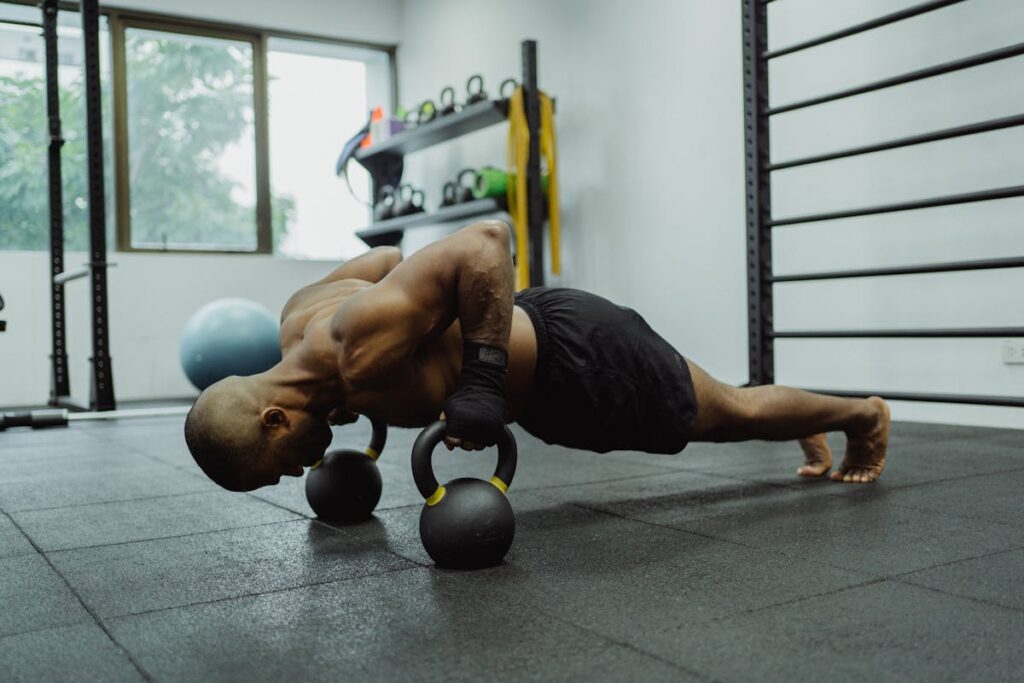
Maintaining Proper Form and Technique
Adhering to proper form and technique is essential for preventing injuries and maximizing the benefits of the exercises. The following guidelines are crucial for maintaining correct form during the 30-day calisthenics workout plan for beginners:
- Warm-Up and Stretching:
- Begin each session with a light warm-up to increase blood flow.
- Include dynamic stretches, such as leg swings and arm circles, to prepare the muscles.
- Core Engagement:
- Focus on engaging the core muscles throughout each exercise.
- Proper core engagement enhances stability and supports the lower back.
- Controlled Movements:
- Perform exercises with deliberate, controlled motions.
- Avoid rapid, jerky movements, which can lead to poor form and increase the risk of injury.
- Spinal Alignment:
- Maintain a neutral spine to avoid unnecessary strain.
- Keep the head aligned with the spine; avoid jutting the head forward or arching the neck.
- Joint Positioning:
- Be mindful of joint placement, especially in exercises like push-ups and squats.
- Ensure that knees do not extend past the toes during squats and lunges.
- Breathing Technique:
- Exhale during exertion and inhale during the relaxation phase.
- Proper breathing prevents fatigue and ensures oxygen delivery to working muscles.
- Proper Grip and Hand Placement:
- Utilize the appropriate grip for different exercises.
- Maintain a firm, but not overly tight, grip to prevent unnecessary tension in the forearms.
- Shoulder Positioning:
- Keep the shoulders down and relaxed to avoid hunching up during exercises.
- Ensure shoulder blades are retracted during push-ups and pull-ups.
- Observation and Adjustment:
- Use mirrors or record videos to observe form and make necessary adjustments.
- Seek guidance from experienced practitioners or trainers if unsure about form.
- Consistent Practice:
- Practicing consistently will help in developing and maintaining proper technique.
- Gradually increase intensity and difficulty while focusing on form.
In conclusion, maintaining proper form and technique throughout the workout plan is indispensable for safety and effectiveness. Following these guidelines will help beginners achieve their fitness goals efficiently.
Tailoring the Plan to Your Fitness Level
Creating a 30-day calisthenics workout plan that aligns with an individual’s current fitness level is pivotal for sustainable progress and injury prevention. Not only does it ensure the exercises are challenging enough to stimulate growth, but it also safeguards against overexertion which can lead to burnout.
Several factors need to be taken into account to customize this plan:
- Self-Assessment:
- Evaluate Strength: Individuals should assess their current strength levels by performing basic movements such as push-ups, squats, and planks.
- Assess Endurance: A quick test, like the maximum number of jumping jacks in one minute, can determine baseline cardiovascular strength.
- Set Realistic Goals:
- Short-Term: Focus on achievable weekly goals to foster motivation.
- Long-Term: Define clear, measurable targets for the end of the 30 days.
- Progressive Overload:
- Incremental Increase: Gradually increase the intensity, volume, and complexity of exercises. For example, start with wall push-ups and advance to standard push-ups.
- Regular Reassessment: Weekly checks to measure improvement and adjust the plan as needed.
- Exercise Modifications:
- Beginner Modifications: Start with simplified versions of exercises. Modify push-ups by doing them on knees, or perform planks with lowered knees initially.
- Advanced Modifications: Gradually shift to more challenging variations like tricep push-ups or plyometric exercises as strength builds.
- Rest and Recovery:
- Adequate Rest Days: Integrate rest or active recovery days to facilitate muscle repair.
- Sleep and Nutrition: Emphasize the importance of sufficient sleep and a balanced diet to support the body’s recovery process.
To effectively implement these strategies, one can follow a structured approach. Here’s an example of what the first week might involve, tailored for beginners:
- Day 1-3:
- Warm-Up: 5 minutes of light cardio.
- Exercise Routine:
- Push-Ups: 3 sets of 8 (modified variation)
- Squats: 3 sets of 10-12 reps
- Plank: Hold for 20 seconds
- Day 4: Active Recovery (light stretching, walking)
- Day 5-7:
- Warm-Up: 5 minutes of jumping jacks
- Exercise Routine:
- Bodyweight Rows: 3 sets of 8-10 reps
- Lunges: 3 sets of 10 reps (each leg)
- Side Plank: Hold for 15 seconds (each side)
This tailored approach ensures beginners build foundational strength progressively and safely. Regular reviews and adjustments keep the plan aligned with the individual’s evolving capabilities.
Common Challenges and How to Overcome Them
Lack of Motivation
A common issue for beginners is maintaining motivation throughout the 30-day plan. Strategies to combat this include:
- Set Realistic Goals: Clearly define achievable milestones.
- Track Progress: Utilize a workout journal or app.
- Find a Workout Buddy: Partnering up can provide encouragement.
- Reward Small Wins: Treat yourself when you reach a goal.
Inconsistent Performance
Fluctuations in daily performance can deter beginners. To ensure consistency:
- Create a Schedule: Sticking to a routine builds discipline.
- Prioritize Rest: Adequate sleep is crucial for recovery.
- Stay Hydrated: Proper hydration affects performance.
Lack of Equipment
Calisthenics focuses on bodyweight exercises, making some consider equipment unnecessary. However, one may face environments lacking basic facilities:
- Innovative Use of Space: Utilize household items for resistance.
- Outdoor Parks: Make use of community calisthenics parks.
- Purchase Minimal Gear: Resistance bands, a pull-up bar, and a jump rope can diversify workouts.
Plateaus in Progress
Progression plateaus can be demotivating. To overcome this:
- Vary Exercises: Incorporate different variations.
- Increase Intensity: Reduce rest periods or increase repetitions.
- Focus on Form: Proper technique maximizes muscle engagement.
Physical Discomfort
New exercises can cause discomfort, often due to improper form or overexertion. To alleviate:
- Warm-Up and Cool-Down: Always start with a proper warm-up and cool-down.
- Listen to the Body: Do not ignore pain; understand the difference between discomfort and injury.
- Modify Exercises: Adjust exercises to fit current fitness levels.
Mental Fatigue
Mental fatigue can disrupt the consistency of the workout plan:
- Mindful Practices: Incorporate meditation or breathing exercises.
- Break It Down: Divide the workout into smaller segments.
- Positive Reinforcement: Remind oneself of the benefits.
Limited Time
Finding time in a busy schedule can be challenging:
- Short Workouts: Even 15-20 minute sessions can be effective.
- Combine with Daily Tasks: Integrate exercises into everyday activities.
- Prioritize Workouts: Treat the workout schedule as an important appointment.
Nutrition Tips to Support Your 30-Day Plan
Proper nutrition is crucial when embarking on a 30-day calisthenics workout plan for beginners. Here are some essential nutrition tips to help support fitness goals, maximize energy levels, and enhance recovery:
- Balanced Macronutrient Intake: Ensure a balanced intake of carbohydrates, proteins, and fats.
- Carbohydrates provide necessary energy.
- Proteins are vital for muscle repair and growth.
- Healthy fats are essential for overall well-being.
- Hydration: Staying hydrated is fundamental.
- Drink at least 8 glasses of water daily.
- Hydrate before, during, and after workouts to maintain performance.
- Pre-Workout Nutrition: Consume a meal or snack 1-2 hours before exercising.
- Focus on complex carbohydrates and lean proteins.
- Examples include oatmeal with fruits or a chicken sandwich on whole-grain bread.
- Post-Workout Recovery: Aid muscle recovery with a post-workout meal.
- Aim for a protein-rich snack within 30 minutes post-exercise.
- Examples include a protein shake, Greek yogurt with berries, or a banana with almond butter.
- Whole Foods: Prioritize whole foods over processed ones.
- Fruits, vegetables, whole grains, lean meats, and dairy are preferable.
- These foods provide essential vitamins and minerals.
- Small, Frequent Meals: Instead of three large meals, consider eating 5-6 smaller meals throughout the day.
- Helps keep energy levels stable.
- Prevents overeating.
- Vitamins and Minerals: Don’t overlook the importance of vitamins and minerals.
- Incorporate a variety of colorful fruits and vegetables.
- Consider supplements if dietary intake is insufficient but consult a healthcare provider first.
- Avoid Sugary Drinks and Junk Food: Limit consumption of sugary drinks and high-fat junk foods.
- These can lead to energy crashes and hinder progress.
Adhering to these nutrition tips will support the demanding physical regimen involved in a 30-day calisthenics workout plan, ensuring the body gets the nutrients it needs to perform optimally, recover efficiently, and build strength.
Tracking Progress and Staying Motivated
Set Clear Goals
Establish specific, measurable, achievable, relevant, and time-bound (SMART) goals. Clear objectives will provide a sense of direction and motivation. Break down the 30-day plan into weekly targets.
Use a Workout Journal
Maintain a calisthenics workout journal. Record sets, reps, rest times, and physical sensations. This practice aids in tracking progress and identifying areas for improvement.
Take Photos and Videos
Document physical changes with photographs and videos. Visual evidence reinforces progress, especially when results seem slow. Capture before-and-after images to compare and stay inspired.
Celebrate Milestones
Acknowledge and reward small achievements. Celebrate hitting new personal records (PRs) or mastering a challenging exercise. Rewards can range from a favorite meal to purchasing new workout gear.
Join Online Communities
Engage with others on forums or social media groups dedicated to calisthenics. Share experiences, exchange advice, and gain motivation from individuals with similar goals. Online camaraderie supports persistence.
Use a Fitness App
Leverage fitness apps designed for calisthenics. Many apps offer progress tracking, workout logs, and reminders. The digital assistance simplifies monitoring and keeps enthusiasm high.
Set Non-Physical Goals
Incorporate non-physical milestones such as improved flexibility or consistency in performing workouts. Non-physical achievements can be equally motivating and sustain long-term commitments.
Mindfulness and Meditation
Practice mindfulness and meditation techniques to stay motivated. Mental clarity and reduced stress levels enhance focus and persistence. Incorporate brief meditation sessions before or after workouts.
Regular Rest and Recovery
Prioritize rest days for muscle recovery and injury prevention. Adequate rest maintains high energy levels, preventing burnout and keeping motivation intact.
Seek Professional Guidance
Consult with a calisthenics coach for personalized advice and structured feedback. Professional input boosts confidence and clarifies progress pathways.
“Progress is more than movement. It is the goal realized, the milestones marked, and the journey savored.”
By systematically tracking progress and implementing strategies to stay motivated, beginners can effectively complete the 30-day calisthenics workout plan and solidify a long-lasting fitness habit.
Conclusion: Reflecting on Your Calisthenics Journey
The 30-day calisthenics workout plan has been a comprehensive initiation into the basics of bodyweight training. Reflecting on this period allows one to assess gains, comprehension, and overall endurance improvements. Initially, participants might have encountered challenges such as unfamiliarity with specific exercises or fatigue. These hurdles are common and signify the body’s adaptation to new physical demands.
Throughout the plan, a focus on progressively increasing intensity ensures that beginners build strength and muscle tone safely. Emphasis on core exercises like planks and push-ups could help develop a solid foundation. Additionally, leg-focused workouts such as squats and lunges play a crucial role in enhancing lower body strength and balance.
Tracking progress is vital. Keeping a journal of daily exercises, repetitions, and personal observations can illuminate growth areas and highlight accomplishments. It becomes evident which exercises have become easier and where additional focus might be necessary. The sense of achievement after completing the 30 days reinforces dedication.
Equally important is acknowledging the value of rest and recovery. Muscles grow and strengthen during rest periods, so understanding the balance between exertion and recovery is crucial. Watching for signs such as muscle soreness or fatigue can guide adjustments in intensity or duration.
Nutrition plays a critical role in this journey. Adhering to a balanced diet that includes adequate proteins, carbohydrates, and healthy fats will support the physical demands of calisthenics.
Engaging with a community, either online or offline, can provide motivation, advice, and support. Sharing experiences and receiving feedback can encourage continued practice and improvement.
Reflecting on progress highlights the importance of consistency. The 30-day plan sets a strong foundation for future fitness goals and establishes a routine that promotes long-term health and well-being.
Emphasis on personal milestones over comparison with others encourages a more fulfilling and sustainable fitness journey.

